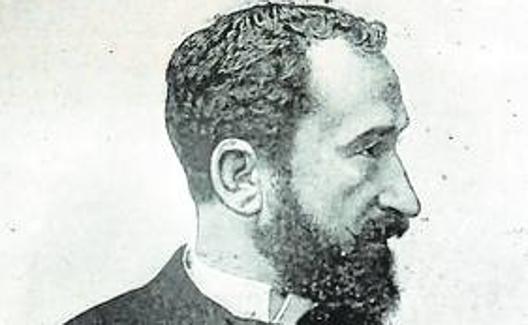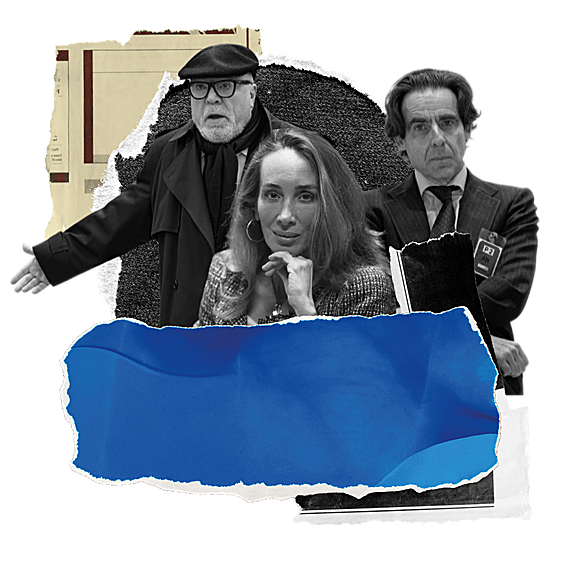Princess Rattazzi, a Bonaparte in Malaga
Marie-Laetitia Bonaparte-Wyse was the grandaughter of one of Napoleon’s brothers, Luciano Bonaparte. She moved to Spain after the death of her husband and later settled in Malaga with her third husband
Víctor Heredia
Friday, 5 August 2022
Social commentary in Malaga in the early years of the Restoration often featured a distinguished European lady, Princess Rattazzi. She first attracted attention during a long visit which was widely covered by the local press, and then again a few years later, when she married a local engineer in the incomparable setting of the city’s cathedral.
Marie-Laetitia Bonaparte-Wyse was the grandaughter of one of Napoleon’s brothers, Luciano Bonaparte. She was born in Waterford, Ireland, in 1831, to Laetitia Bonaparte and John Studholm, although she later adopted the surname of her mother’s husband, Sir Thomas Wyse, from whom she was separated.
The young Marie-Laetitia was educated in Paris, where she began to develop her intellectual curiosity and met personalities from French culture such as Víctor Hugo, Eugène Sue and Alexander Dumas.
At the age of 17 she married Frédéric Joseph de Solms, an aristocrat from Alsace, but they separated not long afterwards. She had a son whose father was rumoured in some Parisian circles to have been Count Alexis de Pommereu.
Expelled from France for her political ideas when her cousin Napoleon III proclaimed himself emperor (her enmity with Eugenia de Montijo was well-known), she settled in Turin and began to develop her career as a journalist and writer. She was also a consummate specialist in miniature painting. She used various pseudonyms during her prolific literary life, including Barón de Stock, Bernard Camille and La Muse des Alpes, among others.

Luis de Rute, Laetitia's third husband
Luis de Rute Giner was born in Malaga in 1844. A cousin of Francisco Giner de los Ríos, he was a founding shareholder of the Free Education Institute. As an engineer, he headed the Public Works department in Granada, and as a politician he was a member of the Liberal party and an MP for Vélez-Malaga during four legislatures. He held the posts of government under-secretary and general director of Welfare and Health, and he also wrote regular articles for a number of publications.
Their wedding took place at Malaga cathedral on 19 January 1880, with Queen Isabel II as the guest of honour (represented by Rosalía Ruiz).
The bride wore a magnificent gown adorned with María Luisa's noble ladies' sash, and the marriage was blessed by the bishop. The couple and their guests then went on for a sumptuous banquet at La Fonda de la Alameda.
Rute died of pneumonia in Granada in April 1889, while his wife was in Paris where she was visiting the Universal Exhibition.
After her first husband died, she married politician Urbano Rattazzi in 1863 (he was prime minister of the newly reunified Italy on several occasions) and they had a daughter, Isabel Roma, who was born in Rome. Those were intensely busy years for Madame Rattazzi, as she published books and magazines and never caused any controversy. After her husband died, in 1873, she returned to Paris for a while before moving to Spain with her daughter.
She quickly integrated into the political and social life of Madrid in the time of Alfonso XII and made friends with relevant personalities such as Cánovas del Castillo, Sagasta, Castelar and Emilia Pardo Bazán. The latter was an assiduous visitor at the literary evenings organised by Princess Rattazzi, as she was known to the media. Her book L’Espagne Moderne (1879) reflects the knowledge she acquired of the intellectual, social and political circumstances of the country in the early years of the Restoration.
On 4 April 1877 she arrived in Malaga for a two-week stay and it was a very busy time. Among other visits, she went to the Cervantes Theatre and Fine Arts Acadamy, a banquet was arranged in her honour at the Fonda de la Alameda, she left a gift of jewellery for the patron saint at the the Virgen de la Virgen shrine, and she visited the Secondary School, where everyone was impressed by her scientific knowledge, among other visits. People said life seemed much more lively while this illustrious traveller was in the city.
The year before, she had met Luis de Rute, and they married in Malaga in 1880 before setting up home in Madrid and adopting two little girls. Unfortunately, Dolores died very young in a terrible accident and Teresa had a disability that kept her isolated all her life.
Marie Laetitia Bonaparte-Wyse continued her intellectual labour until the moment she died, in Paris on 6 Febrary 1902. Francisco Aránega and José A Serrano have now written a book about this multifaceted woman and prolific painter, poet and writer, who they describe as the ‘rebel princess’.
The biography refers to her own description of herself: “My real and indisputable strength comes from tenacity and the fact that I have never been afraid of making enemies. I would go even further, and say that their twisted wills have been more of service to me than the passionate devotion and extreme enthusiasm of my constant friends,” she said.



-kA4G-U170911555713QGE-1968x1216@Diario%20Sur.jpg)